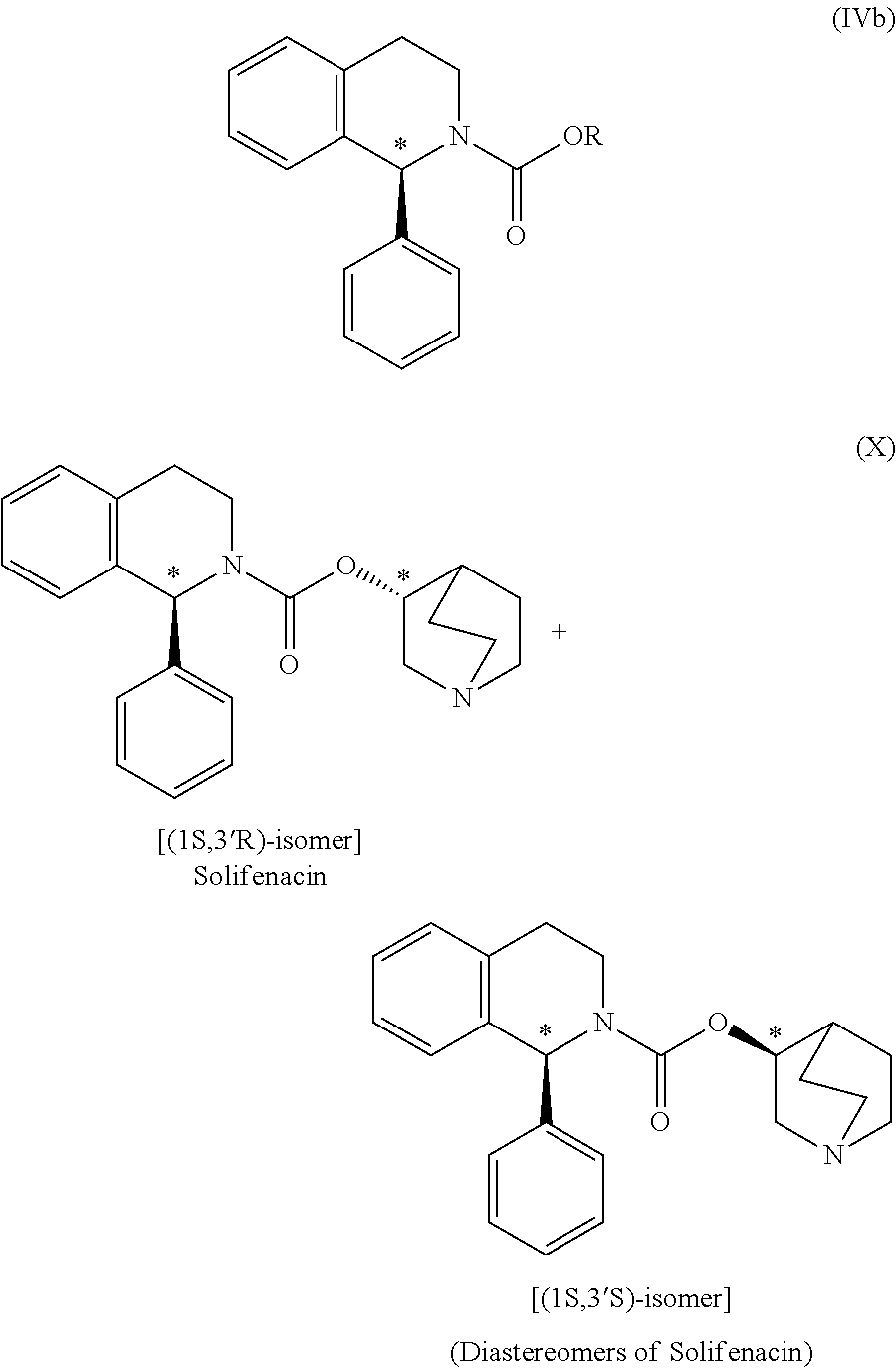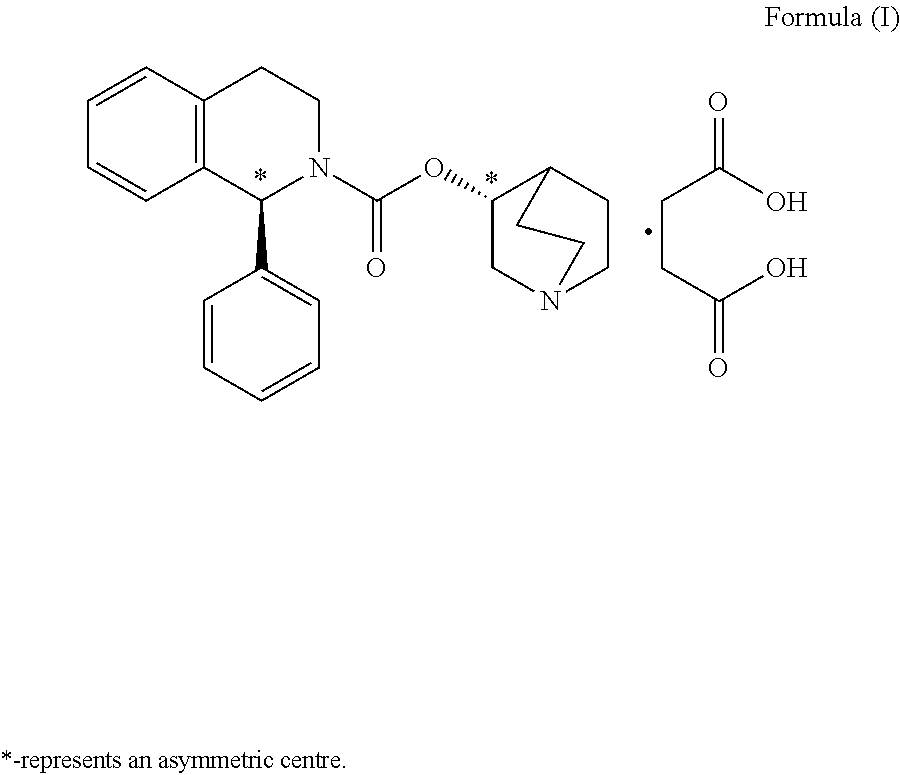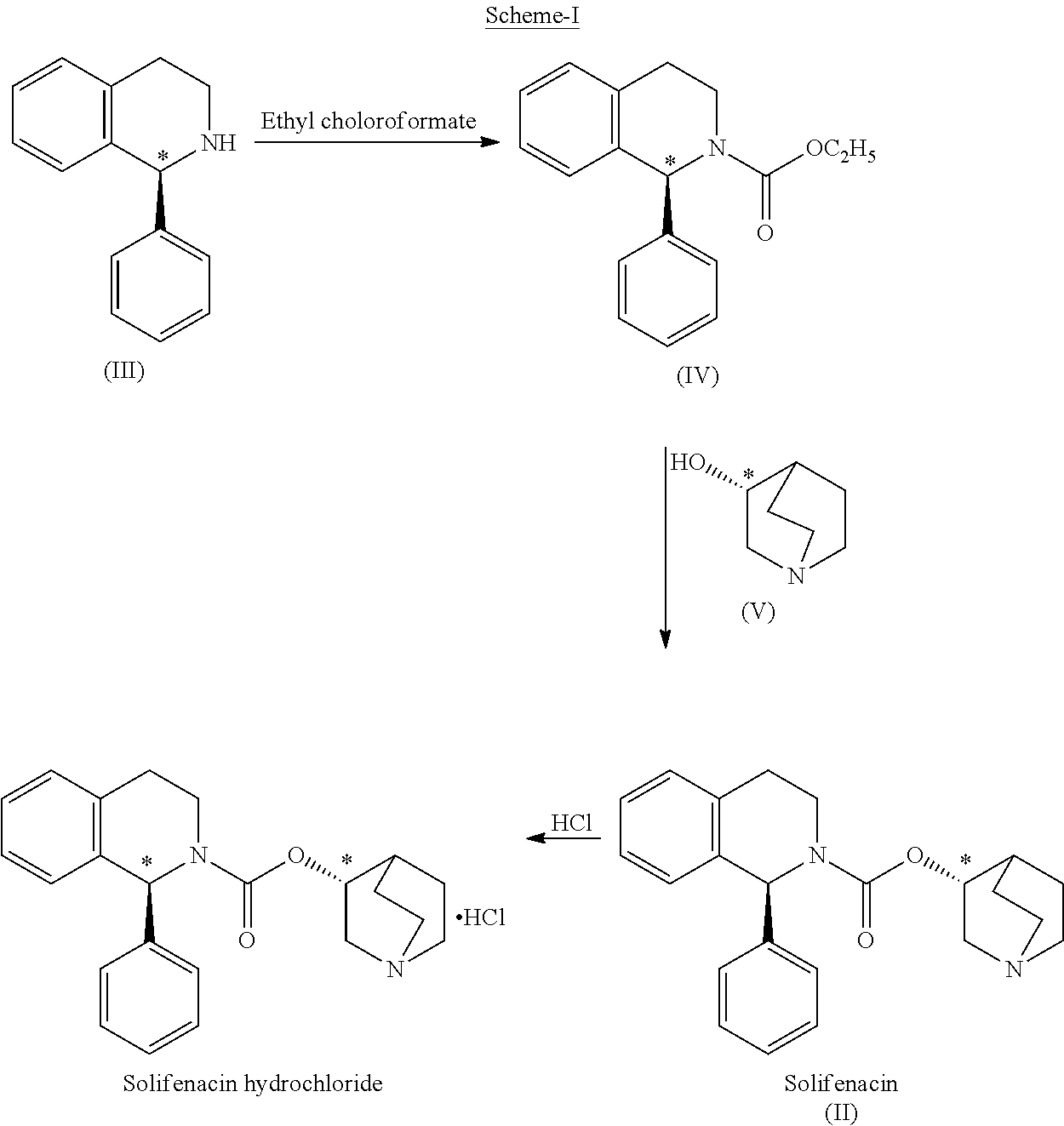Novel process for the preparation of solifenacin succinate
- Summary
- Abstract
- Description
- Claims
- Application Information
AI Technical Summary
Benefits of technology
Problems solved by technology
Method used
Image
Examples
example-1
[0032]Stage: 1
Preparation of (1S)-ethyl 1-phenyl-1,2,3,4-tetrahydro-2-isoquinolinecarboxylate
[0033]Ethyl chloroformate (5.61 g) was slowly added to a mixture of methylene chloride (100 ml), (1S)-1-phenyl-1,2,3,4-tetrahydroisoquinoline (10 g) and triethylamine (5.32 g) at 5-15° C. over a period of 30 min. Thereafter, the reaction mass was warmed to 25-30° C. and stirred at 25-30° C. for 1 h. The reaction solution was sequentially washed with water (50 ml), 3% w / w hydrochloric acid (50 ml), water (50 ml) and 5% w / w aqueous sodium chloride (50 ml) at 25-30° C. The solvent was removed under reduced pressure at 30-40° C. to produce (1S)-ethyl 1-phenyl-1,2,3,4-tetrahydro-2-isoquinolinecarboxylate (13.0 g) as a pale yellow oil. Chromatographic Purity (By HPLC): 99.22%.
[0034]Stage: 2
Preparation of (1S)-3,4-dihydro-1-phenyl-2(1H)-isoquinolinecarboxylic acid (3RS)-1-azabicyclo[2.2.2]oct-3-yl ester [(1S,3′R)- & (1S,3′S)-isomeric mixture] (diastereomeric mixture of Solifenacin)
[0035](RS)-3-Quin...
example-2
[0042]Stage: 1
Preparation of (1S)-ethyl 1-phenyl-1,2,3,4-tetrahydro-2-isoquinolinecarboxylate
[0043]Ethyl chloroformate (109 g) was slowly added to a mixture of toluene (2000 ml), (1S)-1-phenyl-1,2,3,4-tetrahydroisoquinoline (200 g) and triethylamine (101.50 g) at 5-30° C. over a period of 30 min. Thereafter, the reaction mass was stirred at 25-30° C. for 30 min to complete the reaction. The reaction mass was washed with water (2×600 ml) to obtain toluene solution of (1S)-ethyl 1-phenyl-1,2,3,4-tetrahytho-2-isoquinolinecarboxylate.
[0044]Chromatographic Purity (By HPLC): 99.32%.
[0045]This solution was taken for condensation reaction with (RS)-3-quinuclidinol in the next stage to prepare Solifenacin and its diastereomer.
[0046]Stage: 2
Preparation of (1S)-3,4-dihydro-1-phenyl-2(1H)-isoquinolinecarboxylic acid (3RS)-1-azabicyclo[2.2.2]oct-3-yl ester [(1S,3′R)- & (1S,3′S)-isomeric mixture] (diastereomeric mixture of Solifenacin)
[0047](RS)-3-Quinuclidinol (145.80 g) was added to a solution ...
PUM
 Login to View More
Login to View More Abstract
Description
Claims
Application Information
 Login to View More
Login to View More - R&D
- Intellectual Property
- Life Sciences
- Materials
- Tech Scout
- Unparalleled Data Quality
- Higher Quality Content
- 60% Fewer Hallucinations
Browse by: Latest US Patents, China's latest patents, Technical Efficacy Thesaurus, Application Domain, Technology Topic, Popular Technical Reports.
© 2025 PatSnap. All rights reserved.Legal|Privacy policy|Modern Slavery Act Transparency Statement|Sitemap|About US| Contact US: help@patsnap.com



